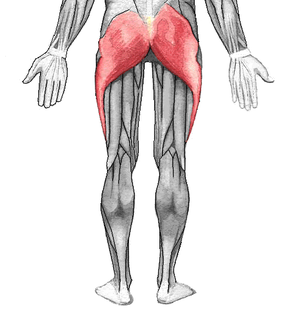 Image via Wikipedia
Image via WikipediaPain is a sensation we all know. We may experience it from accident and injury, overuse, or illness.. When we can trace our pain to a specific incident or series of incidents we have a much easier chance of addressing and relieving the cause of our pain. There is no great detective work that needs to be done to “uncover the villain” causing our pain. What happens when we have no incident or incidents to point to? When we have no illness to blame? What happens when we have pain that occurs without warning, and can change locations in the body? What is happening when the pain “moves”? What can we do about it?
Pain can be seen as a warning signal that a specific area of the body needs attention, now! That signal means that the body is unable to handle the demands we are making on it and that we need to make a change right away. This inability can come from stress responses or damage. More often it comes from a chain of reactions that the body has made to restrictions we have caused.
We may have a minor trauma to an area of the body that leaves us with contracted muscles or imbalances in our joints. The body responds by “robbing from Peter to pay Paul” and making a change in our movement to bring us back to as close to normal movement. Unfortunately, this can set off a chain of “robberies” that continue down the line progressively stealing movement, grace and ease until our body can no longer offer any compromise. That is when we have the cry for attention, pain.
The painful area is usually the only the place we pay attention to, missing the chain of compromises or accommodations that have lead the body to the pain response. These compromises or accommodations will not go away when we address the painful area. Often we will have only temporary relief when we focus on the painful area alone. When we fail to consider the events leading up to the body's pain response we will fail to correct the chain reaction that has been set off. The pain can begin to move around the body as accommodation shifts to other areas. We can chase and chase the pain without finding long-lasting relief if we do not address the chain of reactions that led to it. By addressing that chain we can bring long-term relief and balance to our body.
Tracing the chain of compromise and accommodation would seem complicated and involved. Following the reactions back along the chain to the original event to bring back balance and ease seems a tall order. How do we play detective? How do we relieve our mysterious pain that “moves”? How can we find each link in the chain in the proper sequence to release all the compromises and accommodations?
Strangely enough we have only to turn to our own body for the answer. For every minute of every day our body is performing 100 million separate functions involving all our organs and cells, all of our muscles, nerves and tissues successfully and continually. The problem with our our pain is only a fraction of a fraction of what the body can successfully handle. The body is capable of making such a minor correction if given the chance. The body remembers how to heal and will release that chain of compromise and accommodation if we focus on it. The body knows the sequence, it created the sequence. How do we focus our body on that sequence?
That answers are simple. We look at the areas that are most restricted in movement, not just the painful areas. We can see from the pattern of greaetst to least restricted areas of the body the pattern the body has produced in accommodating to trauma and injury. Addressing the restrictions in the order of greatest to least gives us a means to address the pain that has moved around the body due to its pattern of accommodation.
Using a variety of body reading and structural assessmentt methods, going to someone who understands biomechanics can be ways to address this. We can also work with A Bodytalk practitioner or a Bowenwork therapist to access the internal information of the body and set it on the healing [path taking care of the "pain thet moves".



